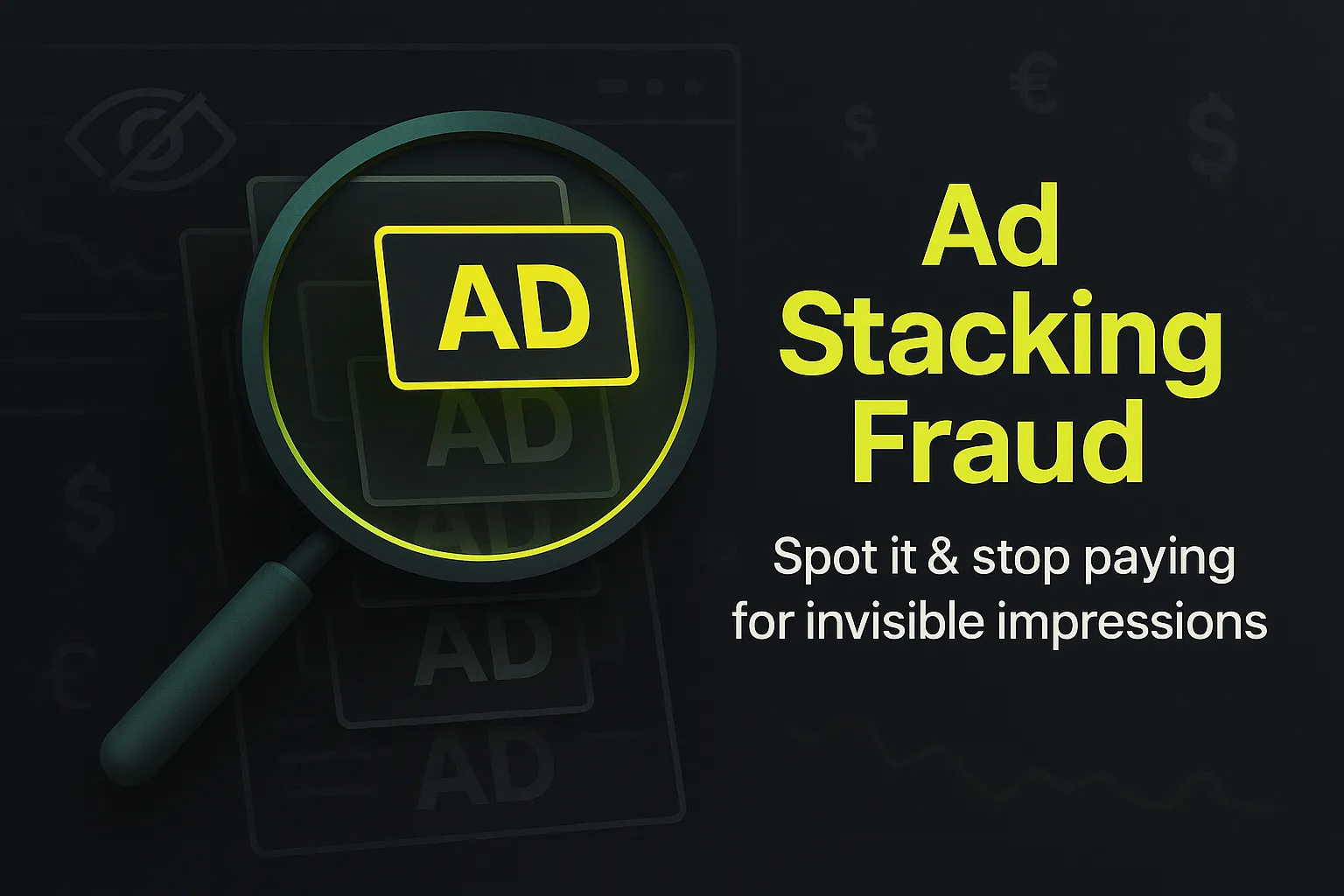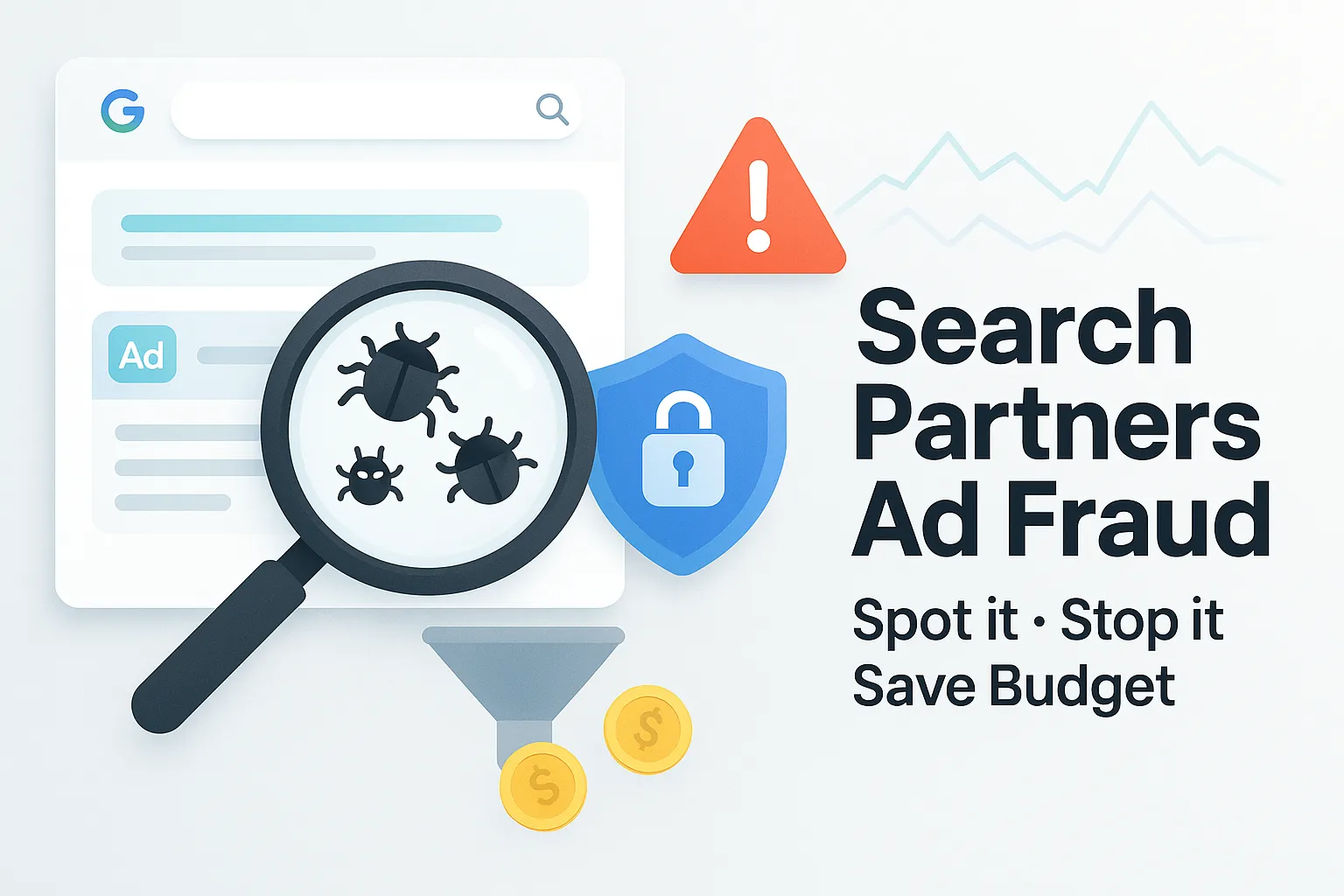Click Fraud on Microsoft Ads: Detection Tools, Prevention Tips, and Refund Guide
.png)
Microsoft Ads, formerly known as Bing Ads, powers pay-per-click (PPC) campaigns across Bing, Yahoo, and Microsoft’s partner network. While Google Ads gets most of the attention when it comes to click fraud, Microsoft’s ecosystem is far from immune. In fact, click fraud on Microsoft Ads—including fake clicks from bots, competitors, or shady publishers—can quietly drain your ad budget without any clear warning.
Many advertisers mistakenly believe Bing is “safer” due to its smaller market share, but that lower visibility makes it a prime target for click fraud and invalid traffic (IVT). The results? Unusual spikes in clicks, poor conversion rates, high bounce rates, and discrepancies in ad performance that signal non-human or malicious activity.
In this guide, you’ll learn how to:
- 🚨 Identify signs of click fraud in your Microsoft Ads campaigns
- 🔒 Use manual and automated tools to block invalid traffic
- 📉 Diagnose suspicious spikes in CTR, bounce rate, and low ROI
- 💸 Submit Microsoft Ads refund claims with success
- 🛡️ Use Spider AF’s automated protection to detect and block PPC fraud across Microsoft, Google, and Meta
Whether you’re managing a $500/month campaign or a six-figure spend across multiple clients, this article will give you the tools, strategies, and resources you need to stop wasting money on fraudulent clicks.
Let’s dive in and take back control of your Microsoft Ads spend — every click should count.
What Is Click Fraud in Microsoft Ads?
The Rise of Suspicious Activity on Microsoft Ads
While Bing's market share is smaller compared to Google, its ad network is not immune to fraudulent activities. In fact, the platform's lower visibility can make it an attractive target for fraudsters who exploit less scrutinized environments. Advertisers have reported unusual spikes in click-through rates (CTR) without corresponding conversions, indicating potential click fraud.
Common Sources of Click Fraud on Microsoft Ads
- Automated Bots: Programs designed to mimic human behavior, clicking on ads to deplete budgets.
- Competitor Clicks: Rival businesses clicking on your ads to exhaust your advertising funds.
- Dishonest Publishers: Partners who generate fake clicks to increase their revenue share.
These forms of click fraud in Microsoft PPC campaigns often go undetected without proper monitoring tools.
Insights from Marketers – What Users Are Reporting (Reddit + Microsoft Answers)
Marketers have shared their experiences on platforms like Reddit and Microsoft Answers, highlighting issues such as:
- Sudden increases in ad spend without a corresponding rise in leads.
- High bounce rates from specific geographic locations.
- Difficulty in obtaining refunds for suspected fraudulent clicks.
These reports underscore the importance of vigilance and proactive measures to combat click fraud and invalid traffic on Bing.
How to Detect Click Fraud in Microsoft Ads

Warning Signs to Watch Out For (CTR Spikes, Bounce Rates, Geolocation, IPs)
Identifying click fraud early can save significant advertising dollars. Be alert for:
- Unusual CTR Spikes: Sudden increases without a change in campaign strategy.
- High Bounce Rates: Visitors leaving your site almost immediately after clicking the ad.
- Geolocation Anomalies: Traffic from regions outside your target audience.
- Repeated Clicks from the Same IP: Multiple clicks from a single IP address in a short time frame.
Analyzing Microsoft Ads Performance Reports
Microsoft Ads provides built-in tools to detect click anomalies:
- Performance Reports: CTR, conversions, bounce rates
- Geographic Reports: Flag unexpected regions
- Search Terms: Reveal irrelevant or abusive traffic sources
For deeper analysis, use independent click fraud protection software that integrates with PPC networks and provides detailed traffic behavior insights. Look for platforms offering real-time monitoring, IP analysis, and session duration scoring.
Case Studies: Real Campaigns Affected by PPC Ad Fraud
A 2023 study estimated over $81 billion in ad spend was lost to click fraud across Google and Microsoft Ads. In real-world PPC audits:
- Bot traffic spiked at night from data centers
- Bounce rates hit 98% from questionable IP ranges
- Conversions flatlined despite 3x increases in clicks
These patterns are common for unprotected campaigns.
Tools for Detecting and Blocking Microsoft Ads Click Fraud
Manual Strategies: IP Blocking, Geotargeting, and Negative Keywords
Simple steps advertisers can take manually:
- Block IPs flagged as suspicious
- Target by location to avoid fraud-heavy geos
- Use negative keywords to filter irrelevant queries
While effective short-term, manual tactics don’t scale well for high-volume campaigns or multi-account setups.
Advanced Tools for Automated PPC Protection – Featuring Spider AF
Spider AF automates ad fraud prevention across Microsoft Ads and other platforms. Key benefits:
- ✅ Real-time click fraud blocking
- ✅ Machine-learning driven traffic analysis
- ✅ Automated reporting for Microsoft refund claims
- ✅ Works across Google, Microsoft Ads (Bing), Meta, Tiktok, and more
It saves teams hours of auditing time and reduces spend loss dramatically.
Comparing Top Solutions: Spider AF vs. ClickGUARD vs. Clixtell vs. Polygraph
How Spider AF Protects Microsoft Ads Campaigns from Click Fraud
Spider AF’s Microsoft Ads integration monitors each click as it happens. Its fraud detection engine evaluates:
- Click velocity
- Time on site
- Referrer integrity
- IP, user agent, and behavioral fingerprinting
If fraud is detected, Spider AF can automatically block the source, send logs to Microsoft for reimbursement, and alert your team via dashboard or email.
How to File a Refund Request with Microsoft Ads
The Official Process to Request a Refund from Microsoft
- Gather Data: Collect logs, IPs, timestamps, and traffic patterns
- Open a Support Case: Use the Microsoft Ads contact form
- Submit Documentation: Include reports from Bing AND your fraud detection software
- Request an Investigation: Be specific about dates and suspected IPs
Tips to Build a Strong Case for Reimbursement
- Submit screenshots and exported logs
- Highlight timeframes with traffic anomalies
- Be professional, clear, and thorough
- Mention proactive prevention steps (e.g. using Spider AF)
What to Expect from Microsoft’s Investigation Process
Most investigations are resolved within 10–14 days. Microsoft may:
- Credit suspicious clicks
- Deny requests that lack sufficient evidence
- Recommend blocking actions
Success rates are higher when you use external tools to back your claims.
Best Practices for Ongoing Microsoft Ads Fraud Protection
Ongoing Monitoring and Campaign Adjustments
Set a weekly fraud check routine:
- Compare CTR vs. conversions
- Monitor geos, IPs, and bounce rates
Audit keyword reports and landing page sessions
Why Spider AF Is the Best Click Fraud Protection for Microsoft Ads
Spider AF keeps your Bing campaigns protected without manual effort:
- Real-time monitoring and blocking
- Threat detection dashboards
- Automatic refund report generation
- Cross-platform fraud intelligence
Stay Updated on Evolving Threats from Bots and Bad Publishers
Fraudsters constantly evolve. Stay ahead by:
- Following industry updates
- Watching Reddit threads on Bing Ads
- Participating in PPC communities
Final Thoughts: Don’t Let Bing Click Fraud Drain Your Ad Budget
Take Immediate Action to Detect and Prevent Fraud
- Review your traffic reports regularly
- Filter IPs, geos, and keywords
- Use advanced fraud detection tools proactively
Leverage Tools Like Spider AF to Automate Protection
Spider AF offers:
- Spider AF’s real-time Microsoft Ads integration
- Features like click fingerprinting, referrer verification, and IP blacklisting
- Auto-generated evidence logs for Microsoft refund claims
Be Proactive—Every Click Counts When You're Paying for It
Every invalid click cuts into your ROI. Take back control with visibility, protection, and automation.
📌 Summary: Protect Your Bing Ads with Smart Monitoring and Spider AF
💡
💡 Don’t let Microsoft Ads click fraud erode your ROI. Detect invalid clicks, secure your ad budget, and get proactive with Spider AF’s automated fraud protection.
➡️ Start your free trial of Spider AF and protect every Microsoft Ads click starting today.






















